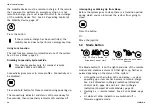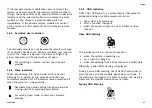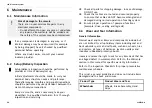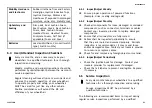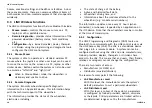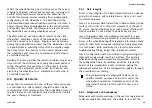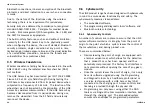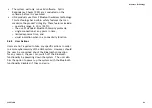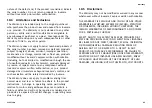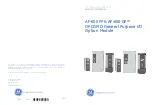
LiNX® Control System
homes, vocational settings and health care facilities. Across
these environments, there are numerous different items of
both medical and non-medical equipment that also operate
wirelessly.
9.3 LiNX Wireless Functions
The LiNX control system functions that use Bluetooth include:
•
Mouse mover
—controls the mouse cursor on a PC,
laptop or other portable device.
•
Remote diagnostics
—provides status information of the
powered wheelchair (battery status, fault conditions
etc.).
•
Configuration
—by a trained provider, dealer, therapist
or clinician using the programming and diagnostic tools,
configures the LiNX control system.
9.3.1 Mouse Mover
The system is able to operate as a standard wireless PC
mouse where the joystick or other user input can be used
to move the cursor on the screen on a PC, laptop or other
similar device. Buttons within the system can also be used
to emulate a “left click” and “right click”.
When in Mouse Mover mode, the wheelchair is
stationary and unable to drive.
9.3.2 Remote Diagnostics
The system transmits wheelchair-specific diagnostic
information to an Apple iOS device. This information helps
with the technical support of the wheelchair.
The information provides the status of the wheelchair
electronics, including:
•
The state of charge of the battery,
•
Active and historical fault data,
•
Wheelchair driving time, and
•
Information about the modules attached to the
wheelchair (e.g. module serial numbers).
The information updates once every 12 hours (when
connected), or whenever requested by an application on
the iOS device. Note that the wheelchair may be in motion
at the time of transmission.
9.3.3 Configuration
The LiNX Programming and Diagnostic (P&D) tools use
Bluetooth to communicate with the LiNX control system via
the LiNX Access Key (LAK). The LAK is a standalone device
that plugs into a remote module. A system cannot be
configured without using the LAK and only manufacturers,
trained providers, dealers, therapists or clinicians have
access to the LAK. This means that end users, their friends,
relatives or caregivers cannot change the configuration.
There are two levels of access:
•
Manufacturer (or OEM) and
•
Distributor (provider/clinician).
The levels of access permit the following:
•
LAK Manufacturer Level
With this level, the manufacturer sets the system's
default parameters to suit a particular wheelchair.
•
LAK Distributor Level
With this level, a subset of the system's parameters
is configured by trained providers, dealers, clinicians
or therapists. Critical parameters are limited within a
predetermined range as set by the manufacturer.
38
1195718-A
Summary of Contents for LINX ACU
Page 1: ......

